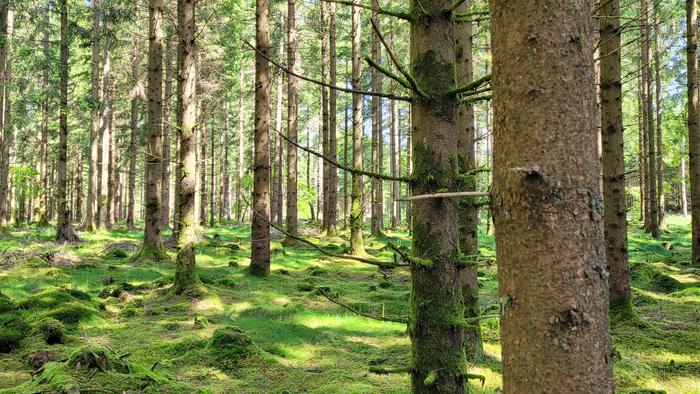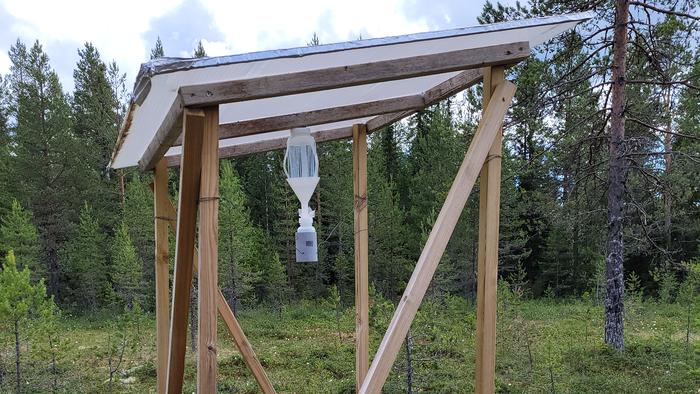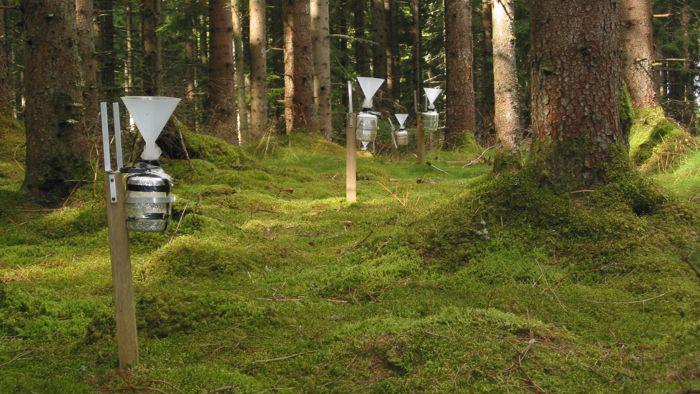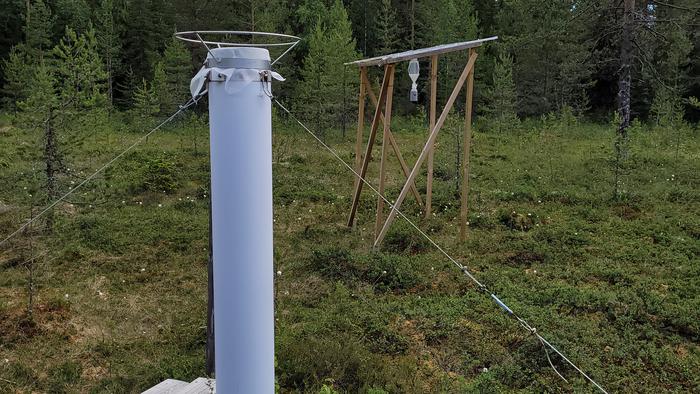- Startpage
- Krondroppsnätet
- SWETHRO
- About SWETHRO
- Deposition

Deposition
Air pollution deposition is measured monthly within the SWETHRO, Swedish Throughfall Monitoring Nework, both in open areas and under tree canopies in the forest. In open areas, deposition is measured using bulk collectors, while deposition in forest ecosystems is measured as throughfall. Some substances interact with the tree canopies, and therefore string samplers are also used to determine the dry deposition of these substances.
The total deposition consists of both wet and dry deposition. The deposition at a specific site is influenced by the amount and composition of precipitation as well as the concentrations of various substances in the air. Land use also affects the magnitude of deposition. For example, deposition conditions are different in a forest compared to adjacent open land, which can be explained by the trees acting as filters for airborne pollutants.
The total deposition of various substances to the forest involves several processes. Part of the deposition occurs as precipitation, known as wet deposition. Another part occurs as gases and particles "sticking" to the tree canopies, known as dry deposition. What has been deposited as dry deposition is washed down to the forest floor with precipitation in the form of throughfall.
Provides a comprehensive measure
Throughfall is therefore considered to provide a comprehensive measure of the total wet and dry deposition. Dry deposition could thus be calculated as the difference between throughfall deposition and precipitation deposition in open areas. However, certain substances can be directly absorbed by, or alternatively leached from, the tree canopies. This means that throughfall measurements provide a good measure of the total deposition only for substances that do not interact with the tree canopies, such as sodium and chloride. For other substances, such as nitrogen and base cations, supplementary measurements with string samplers are required to accurately calculate dry deposition.
All work within SWETHRO, from sampling to chemical analysis, validation, and data processing, is carried out according to well-established procedures, and the laboratories are accredited for the chemical analyses. This ensures high-quality data and guarantees that data from different locations and from different years are directly comparable.


